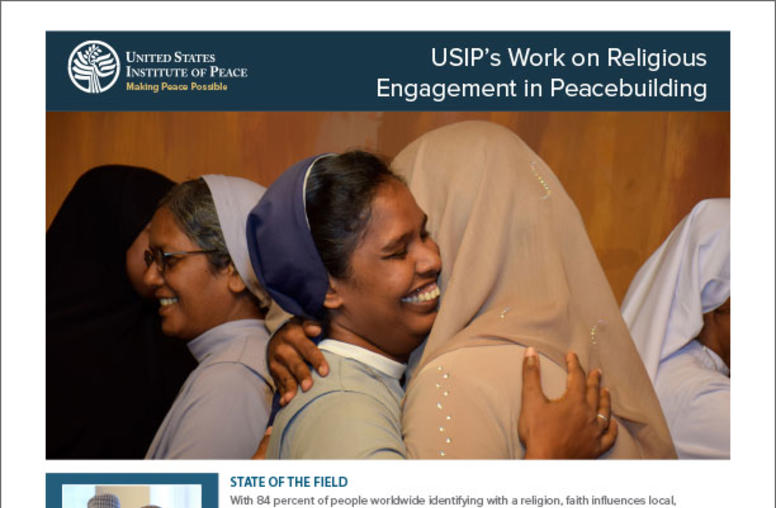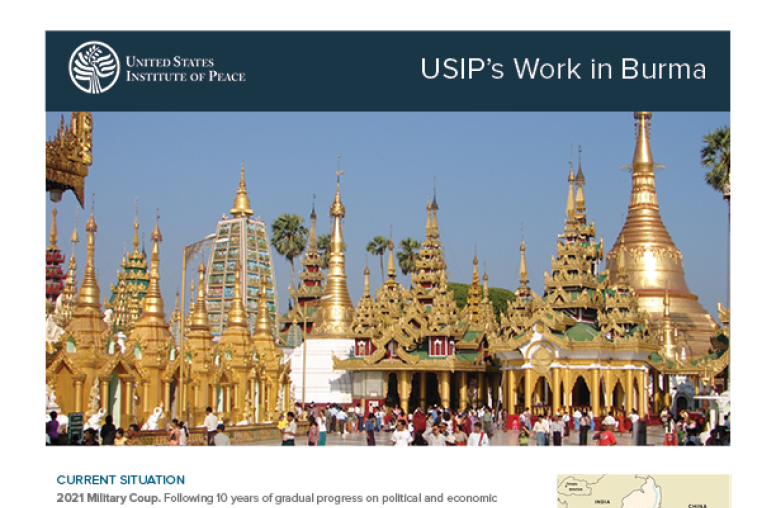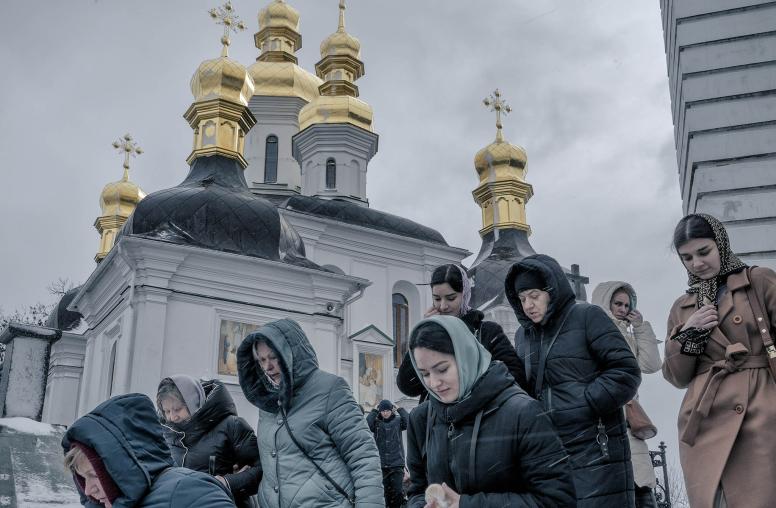Experts Examine Religious Peacebuilding at USIP
The still-young field of religious peacebuilding has made significant strides in its development, though much more remains to be done in understanding its potential and its practical application to easing conflicts, a panel of practitioners said at an event hosted by the United States Institute of Peace (USIP) on Nov. 9.
The still-young field of religious peacebuilding has made significant strides in its development, though much more remains to be done in understanding its potential and its practical application to easing conflicts, a panel of practitioners said at an event hosted by the United States Institute of Peace (USIP) on Nov. 9.
“Religion is so often pointed to as a cause of conflict, but that sentiment ignores its potential as a motivating force and instrument for peacebuilding,” David Smock, senior vice president of USIP for the Centers of Innovation and director of the Religion and Peacemaking Program, said in an interview.
Several of the specialists on a panel on religious peacebuilding broadly agreed, and they credited USIP efforts for playing a major role in fleshing out thinking in the field and applying it to conflict zones.
Scott Appleby. Appleby, director of the Kroc Institute for International Peace Studies and a professor of history at the University of Notre Dame, said “religious peacebuilding has come a long way…from seedling to meadow to field.” USIP publications, he said, had offered some guidance for academic departments and government agencies alike, while its use of local religious partners in conflict zones had provided “a methodological model for the field.” Said Appleby, “You have not only studied religious peacebuilding. You have advanced its successful practice, as in the USIP processes in Nigeria, Pakistan and Afghanistan.” Appleby likened the field to a child that has grown but “is not yet fully mature. We are now entering the dread teen years.”
Rabbi Michael Melchior. Melchior, international director of the Elie Wiesel Foundation and a leader of the Mosaica Center for Inter-Religious Cooperation, also credited USIP for taking “a courageous stand” to support Mosaica’s cross-religious bridge-building between Israelis and Palestinians. He also said that the Arab Spring was creating opportunities to advance the transition of Islamist political parties into responsible movements that are part of national leadership. This year’s events are stirring Islamic intellectual thought about how sharia religious law can function in a context of democracy and protection of minority rights—a development he called “very exciting.” He said he envisions the creation of “religious peace” in the Middle East as lending key support to an eventual “political peace.”
Jackie Ogega. The director of the women’s mobilization program for Religions for Peace, Ogega focused on the centrality of outside peacebuilding entities working with local religious organizations as “the primary actors.” The local groups, she said, must be involved from the beginning and can provide much of the practical expertise needed for advancing efforts at inter-religious peacebuilding. Ogega also argued for giving greater priority to involving women and young people of faith in those efforts.
Qamar-ul Huda. Huda, a senior program officer and scholar of Islam in USIP’s Religion and Peacemaking Center of Innovation, said that the Arab uprisings in the Middle East and North Africa are spurring new thinking about the role of Islam and Muslim peacebuilding. Democracy, non-violent political change and the willingness of religious actors to work for peace all are notions that have been widely assumed to be impossible in the region. “These statements have been so entrenched in Western policymakers, but the last 11 months have challenged this fundamental thinking,” he said. At the same time, Huda suggested that in his experience Islamic religious leaders tend to view peacebuilding differently from Western approaches to conflict resolution. Islamic religious leaders often “view conflict as an inevitable aspect” in human affairs, and in peacebuilding their focus is on delivering justice. “Justice has to be served, and accountability is a paramount ethic,” he said.
Mohammed Abu-Nimer. Abu-Nimer, the director of the Peacebuilding and Development Institute at American University’s International Peace and Conflict Resolution program, sounded notes of caution, saying “we have not managed to mainstream this field.” He added, “We have not yet articulated who we are—what is unique about us.” Abu-Nimer said the field’s development has been slowed by a variety of factors: the lack of evaluation mechanisms to measure its impact; the sense of some peacebuilders that there is no incentive to work on the religious dimensions of peace; the limited presence of thinkers in the field within academic institutions; the scant involvement in the field by women; and insufficient outreach to the media by practitioners.



